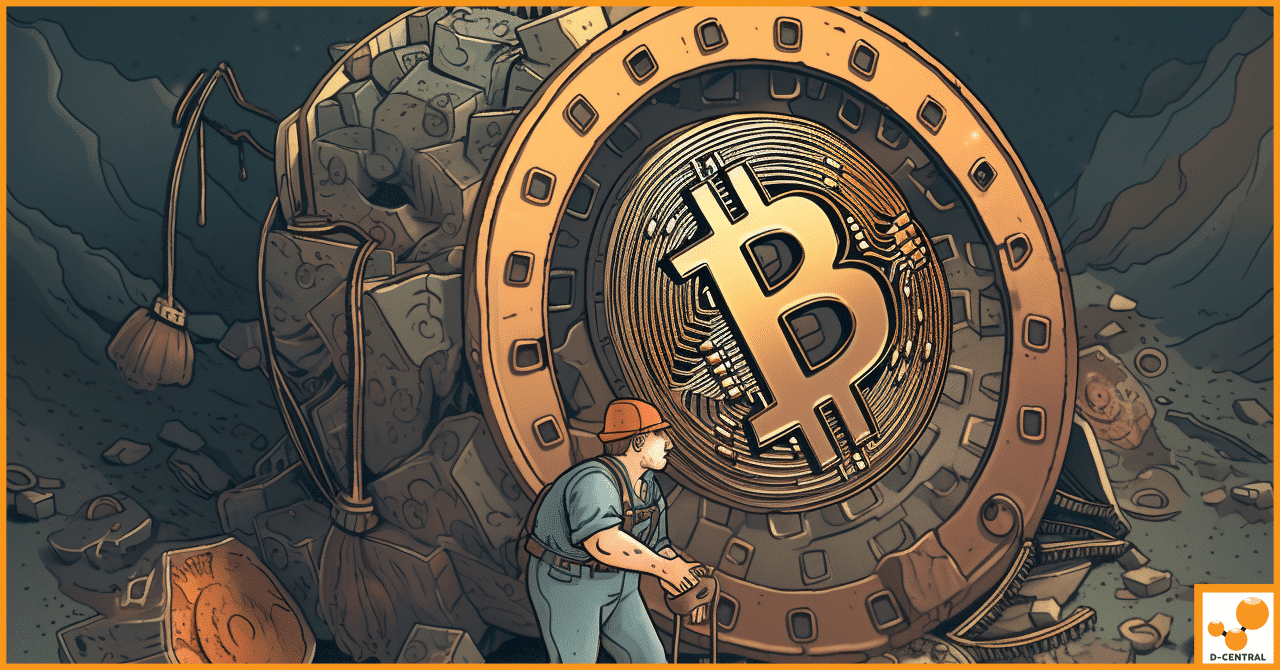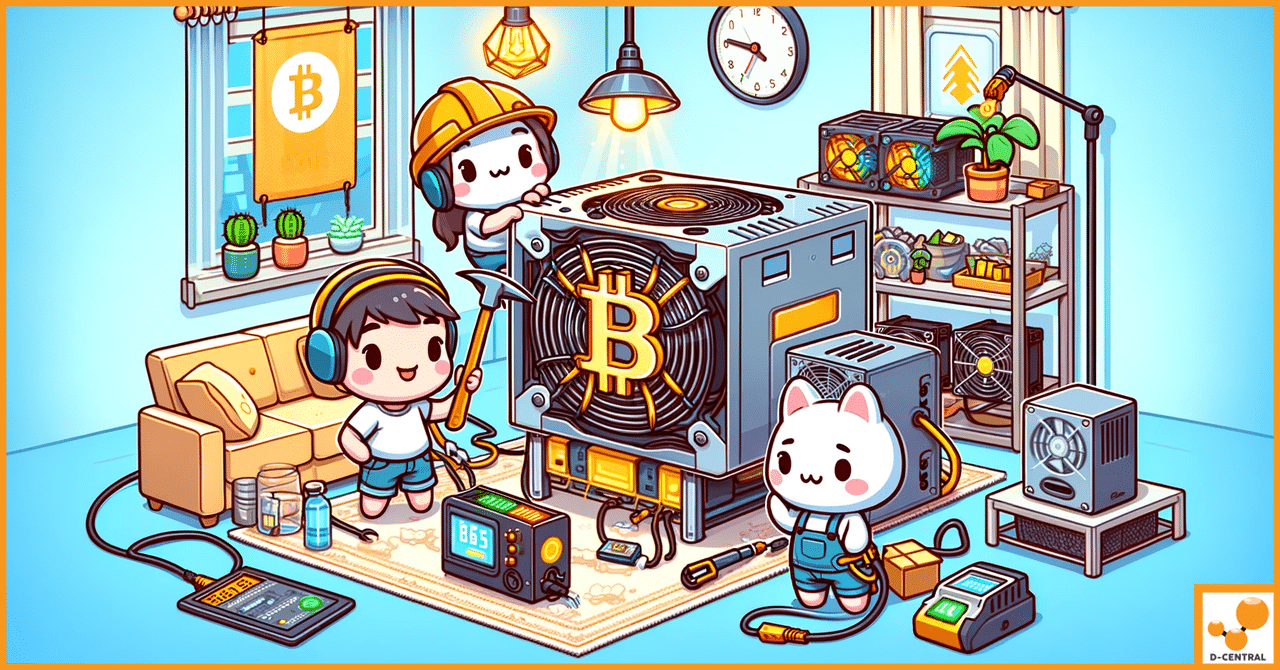
Home Bitcoin Mining: Power Quality, Harmonics, and Efficiency
Welcome to the world of home Bitcoin mining! As cryptocurrency enthusiasts increasingly set up mining operations in their homes, it’s
4479 Desserte Nord Autoroute 440, Laval, QC H7P 6E2

Bitcoin mining is verifying transactions and adding them to the public blockchain, a decentralized ledger that records all Bitcoin transactions. This complex procedure involves miners using specialized computer hardware to solve intricate mathematical problems, which in turn validates and secures the transactions. As a reward for their efforts, miners receive newly created Bitcoin and transaction fees. Mining plays an essential role in maintaining the integrity of the Bitcoin network and generating new coins.
The primary purpose of mining within the Bitcoin network is to ensure its security and stability. By necessitating miners to tackle complex problems, the network upholds a decentralized consensus, making it exceedingly difficult for any single entity to manipulate or undermine the system. Furthermore, mining acts as a mechanism for distributing new Bitcoin into circulation at a controlled and predictable rate, assisting in inflation management. In essence, mining serves as the cornerstone for maintaining the trustworthiness and functionality of the Bitcoin network.
Bitcoin is a decentralized digital currency that relies on a peer-to-peer network of computers for operation. Bitcoin transactions are documented in a public ledger known as the blockchain, overseen by a group of participants called miners. These miners employ specialized hardware and software to solve intricate mathematical problems and validate new transactions. In return for their efforts, miners are rewarded with newly minted bitcoins and transaction fees.
The Bitcoin mining process is crucial for the security and functionality of the Bitcoin network. It ensures transaction validity, prevents double-spending, and achieves consensus among nodes regarding the ledger’s state. Additionally, Bitcoin mining controls the release of new bitcoins; the reward for each mined block diminishes over time until it reaches zero.
To better understand Bitcoin mining, consider the following key concepts:
The Bitcoin mining process can be summarized in the following steps:
Bitcoin mining is a competitive, dynamic process demanding significant computing power and electricity. Miners must continually update their hardware and software to keep pace with increasing difficulty and competition. Bitcoin mining also faces scalability, security, regulation, and environmental impact.
Bitcoin mining is an essential component of Bitcoin’s design and innovation. It enables a decentralized, trustless system that does not rely on any central authority or intermediary. Moreover, it incentivizes participants to contribute to the network’s security and functionality.
During Bitcoin’s early days, mining was performed using a computer’s central processing unit (CPU). However, as more powerful and energy-efficient hardware options emerged, CPU mining quickly became outdated, giving way to advanced mining technologies.
Graphics processing units (GPUs) marked the next Bitcoin mining hardware evolution stage. GPUs are more powerful and efficient than CPUs, providing increased hashing power and allowing miners to solve complex mathematical problems faster. Nevertheless, the rise of more advanced hardware, particularly ASIC miners, has made GPU mining non-competitive within the Bitcoin network.
Application-specific integrated circuit (ASIC) miners are the most efficient and powerful hardware for Bitcoin mining. These devices are specifically designed for mining Bitcoin, delivering unparalleled hashing power and energy efficiency. As a result, ASIC mining has become the standard for Bitcoin mining, rendering other hardware types non-competitive.
Field-programmable gate arrays (FPGA) were introduced as an alternative to ASIC miners. FPGA mining devices are more energy-efficient than GPU miners but less powerful than ASIC miners. However, due to continuous advancements in ASIC technology and its market dominance, FPGA mining has recently lost popularity.
When choosing mining hardware, it’s crucial to compare the profitability of various options. Online calculators, such as AsicMinerValue, CryptoCompare, and Nicehash, can help estimate the potential return on investment (ROI) for different mining devices. Additionally, the daily revenue formula can be used to calculate profitability manually, considering factors like block time, network hash rate, and electricity costs.
The hash rate measures the number of hash calculations a mining device can perform per second. A higher hash rate increases the likelihood of finding a valid block solution and receiving block rewards. Therefore, choosing hardware with a high hash rate is crucial to improve the chances of mining success.
Energy efficiency is another critical consideration when selecting mining hardware. Mining devices consume significant amounts of electricity, quickly reducing mining profits. Choosing hardware that offers an optimal balance between hashing power and the energy consumption is essential. Opt for devices with a low wattage-to-hash rate ratio, as these will consume less electricity for each unit of hashing power generated.
The cost and availability of mining hardware can vary significantly. High-end ASIC miners may provide exceptional performance but come with a substantial price tag, while more affordable options may be less powerful or energy-efficient. When selecting mining hardware, consider your budget, the potential ROI, and the ease of procuring the device. Remember that mining hardware often sells out quickly, especially during periods of high demand, so it’s crucial to act promptly when a suitable device becomes available.
A well-designed mining environment is crucial for your mining hardware’s longevity and efficiency. Ensure adequate airflow, as proper ventilation and cooling are necessary to prevent overheating, which can lead to component damage or hardware failure. Consider investing in additional cooling solutions like fans, air conditioning units, or liquid cooling systems.
Mining equipment consumes a significant amount of electricity. Evaluate your electrical capacity before setting up your mining environment. Ensure your home’s electrical network can handle the increased load and avoid overloading individual sockets or circuits. Consult an electrician if unsure about electrical capacity or safety. Use surge protectors and high-quality power supply units (PSUs) to protect your hardware from electrical fluctuations.
Mining hardware can generate substantial noise and heat, which may be disruptive in residential settings. Set up your mining environment in a dedicated space (e.g., garage, basement, separate room) to minimize disruptions and ensure proper airflow. Ensure enough space for your mining hardware and cooling solutions. Be mindful of noise levels and take necessary measures, such as soundproof enclosures or isolating the mining area, to reduce noise if needed.
Consider factors like:
Some of the best bitcoin mining software includes:
Top bitcoin mining pools include:
Choosing the right mining software is essential for optimizing your mining performance and maximizing your profits. Some popular mining software options include:
Joining a mining pool is highly recommended for individual miners, as it increases the chances of earning a steady income by pooling resources with other miners. When selecting a mining pool, consider the following factors:
Download the mining software: Choose the appropriate mining software for your hardware and download the latest version from the official website or a trusted source.
Install the software: Follow the installation instructions provided by the software developer. This may involve extracting the downloaded files, running an installer, or simply launching the software directly from the downloaded folder.
Connecting to a mining pool: Open the mining software’s configuration file or user interface, and input the necessary information to connect to your chosen mining pool. This typically includes the pool’s URL, port number, and your username or worker name.
Setting up wallet address: In the mining software settings, provide your Bitcoin wallet address where the mining rewards will be sent. Ensure that the address is correct, as any mistakes could result in losing your earned rewards.
Adjusting mining settings (optional): Depending on the mining software, you may be able to tweak additional settings such as mining intensity, hardware temperature limits, or fan speeds to optimize performance and energy efficiency.
Launch the mining software: Once the settings are properly configured, start the mining software. The software will connect to the mining pool and begin mining for Bitcoin.
Monitor performance: Regularly check the mining software’s interface or the mining pool’s dashboard to monitor your mining performance, including hash rate, accepted shares, and estimated earnings.
Optimize settings: Based on your monitoring, adjust your mining software settings to improve your mining performance or reduce energy consumption. This may involve increasing or decreasing mining intensity, adjusting fan speeds, or updating your mining software to the latest version.
Maintain hardware: Perform regular maintenance on your mining hardware, such as cleaning dust and ensuring proper ventilation, to keep the devices running efficiently and prolong their lifespan.
Cryptocurrency mining can be an extremely profitable venture, but it comes with several risks and challenges. Mining hardware obsolescence, difficulty adjustments, market volatility, competition for block rewards, regulatory concerns and environmental impact are all factors that need to be considered when calculating the potential profits from Bitcoin mining. To maximize profits while minimizing costs and risk exposure, miners should take advantage of lower electricity rates during off-peak hours and consider joining a mining farm or colocation facility. Additionally, they should ensure their operations comply with local regulations and taxation laws to avoid any legal issues down the line. With careful planning and consideration of these factors, cryptocurrency miners can significantly increase their earnings by participating in this lucrative industry.
What is Bitcoin mining?
Bitcoin mining is the process of verifying transactions and adding them to the public blockchain, a decentralized ledger that records all Bitcoin transactions. Miners use specialized computer hardware to solve intricate mathematical problems, validating and securing transactions. Miners are rewarded with newly created Bitcoin and transaction fees for their efforts.
Why is mining important in the Bitcoin network?
Mining plays a crucial role in maintaining the security and stability of the Bitcoin network. It ensures transaction validity, prevents double-spending, achieves consensus among network nodes, and controls the release of new Bitcoins into circulation. It also contributes to the decentralized nature of Bitcoin, making it difficult for any single entity to manipulate the system.
What are the key concepts in Bitcoin mining?
Some key concepts in Bitcoin mining include:
– Hash: A one-way function that generates a fixed-length output, used in Bitcoin mining for calculations and verification.
– Proof-of-Work (PoW): A task miners must complete to prove their commitment and legitimacy. In Bitcoin, PoW involves discovering a hash with a specific number of zeros.
– Block: A collection of verified transactions added to the blockchain by miners, containing information like previous block’s hash, timestamp, nonce, and Merkle root.
– Blockchain: A linear sequence of blocks that hold the entire history of Bitcoin transactions, secured by PoW and preventing alteration of past transactions.
What are the different types of mining hardware?
– CPU Mining: In the early days of Bitcoin, mining was performed using a computer’s central processing unit. However, CPU mining quickly became outdated due to the rise of more powerful hardware options.
– GPU Mining: Graphics processing units became the next generation of mining hardware, providing increased hashing power and efficiency. However, they have been overtaken by ASIC miners.
– ASIC Mining: Application-specific integrated circuit miners are specifically designed for mining Bitcoin, delivering unparalleled hashing power and energy efficiency. ASIC mining has become the standard, rendering other hardware types non-competitive.
– FPGA Mining: Field-programmable gate arrays were introduced as an alternative to ASIC miners, offering better energy efficiency than GPUs but less power than ASICs. However, FPGA mining has lost popularity due to ASIC advancements.
How do I choose the right mining hardware?
Consider factors such as hashrate (number of hash calculations per second), energy efficiency, cost, and availability when selecting mining hardware. Additionally, research profitability calculators and compare different options to estimate the potential return on investment (ROI). Keep in mind factors like electricity costs and hardware obsolescence.
What should I consider when setting up a mining environment?
When setting up a mining environment, consider proper ventilation and cooling to prevent overheating. Evaluate your electrical capacity and ensure it can handle the increased load. Take into account noise and space requirements by dedicating a separate, well-ventilated space for your mining hardware. Additionally, consider selecting the right mining software and joining a mining pool for increased efficiency and profitability.
How do I configure and launch my mining setup?
Install the mining software compatible with your hardware, configure it to connect to your chosen mining pool, and provide your Bitcoin wallet address for rewards. Adjust mining software settings, such as mining intensity or fan speeds, for optimization. Launch the mining software and monitor its performance, making necessary adjustments to improve efficiency.
How can I manage mining costs and optimize profitability?
Understand your electricity costs and factor them into profitability calculations. Utilize mining profitability calculators and consider strategies like mining during off-peak hours or joining a mining farm or colocation facility for lower electricity rates. Keep hardware maintenance in check and stay updated with the latest advancements to ensure optimal mining performance. Be aware of the risks and challenges of mining, such as hardware obsolescence, market volatility, and regulatory considerations.
DISCLAIMER: D-Central Technologies and its associated content, including this blog, do not serve as financial advisors or official investment advisors. The insights and opinions shared here or by any guests featured in our content are provided purely for informational and educational purposes. Such communications should not be interpreted as financial, investment, legal, tax, or any form of specific advice. We are committed to advancing the knowledge and understanding of Bitcoin and its potential impact on society. However, we urge our community to proceed with caution and informed judgment in all related endeavors.
Related Posts

Welcome to the world of home Bitcoin mining! As cryptocurrency enthusiasts increasingly set up mining operations in their homes, it’s

Welcome to the world of home-based Bitcoin mining! At D-Central Technologies, we’re passionate about empowering individuals to participate in the

n the intricate world of Bitcoin mining, Application-Specific Integrated Circuit (ASIC) miners stand as the backbone of the industry, driving